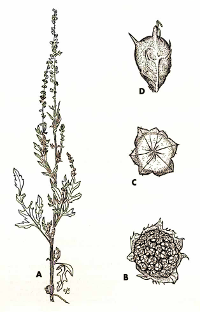AltamISA
AltamISA is an alternative implementation of ISA-tools data model and ISA-Tab file format.
also:
Ambrosia peruviana is a species of plant in the family Asteraceae. It occurs from Mexico south to Argentina, being common in the Antilles and the Andes.
In its native range, A. peruviana is used as a medicinal plant with analgesic, antiinflammatory, anthelmintic and antiseptic properties.
For the Impatient
$ pip install altamisa
## OR
$ conda install altamisaWhat is ISA and ISA-Tab?
The ISA (Investigation-Study-Assay) defines a data model for describing life science experiments (specification). ISA-Tab defines a file format based on TSV (tab-separated values) for storing of ISA data in files. Shortly, experiments are encoded by DAGs (directed acyclic graphs) of samples being taken from sources (e.g., donor individuals) and then subjected to "operations" (e.g., extraction, assays, transformations) leading to different downstream "materials".
Why AltamISA?
Attempting to use the official isa-api Python package in early 2018 led to quite some frustration.
Even the official ISA-tab examples parsed into non-expected graph structures.
Attempting bug fixes to isa-api proofed difficult because of not having complete automated tests.
Further, the scope of isa-api was much broader (including between ISA-Tab and other formats) such that we expected high maintenance costs (development had apparently stalled).


